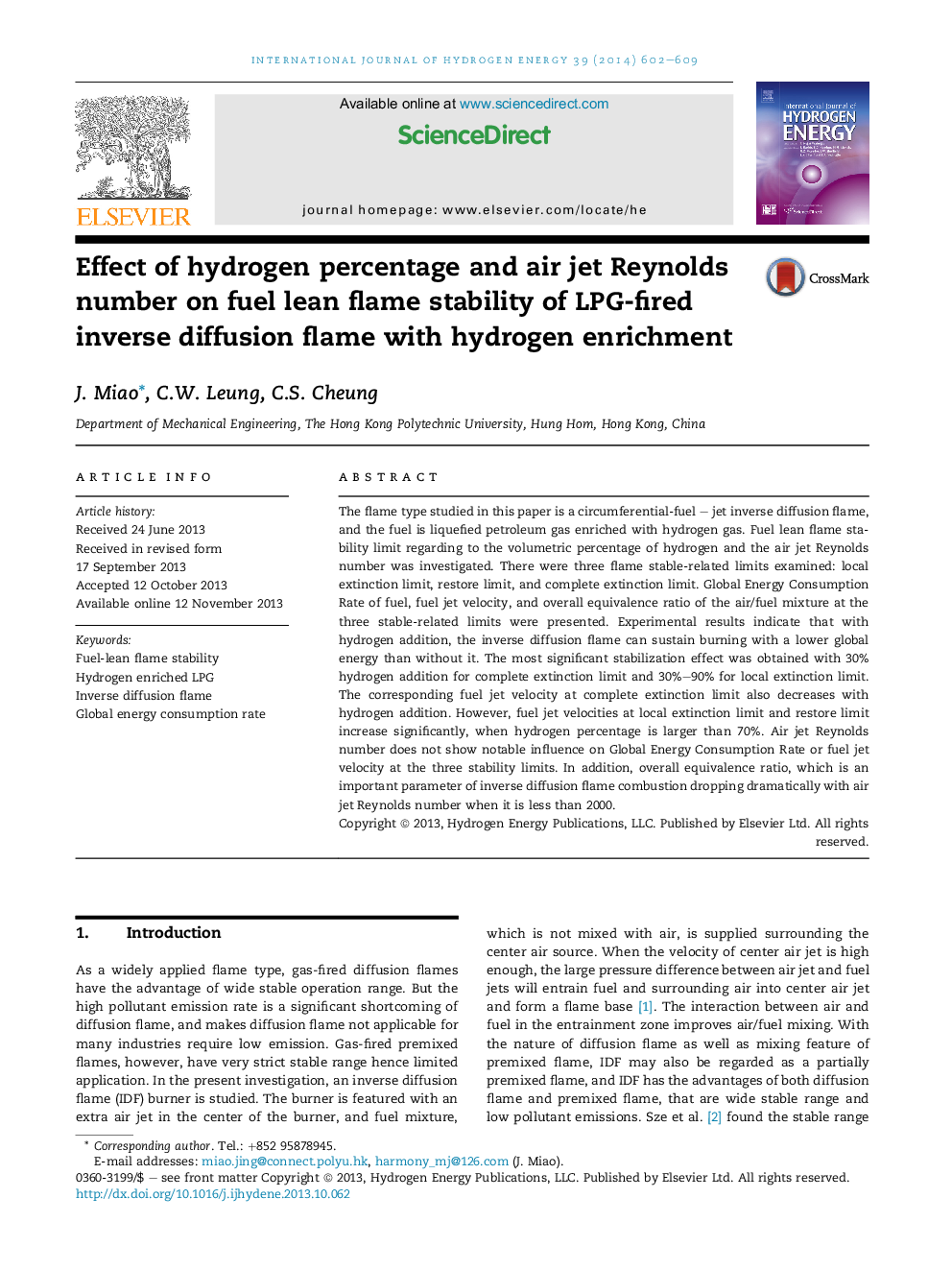| Article ID | Journal | Published Year | Pages | File Type |
|---|---|---|---|---|
| 1273972 | International Journal of Hydrogen Energy | 2014 | 8 Pages |
•We examined the flame lean stability of inverse diffusion flame burning LPG and hydrogen mixture.•Three types of flame lean stabilities were observed.•The most effective hydrogen percentage is from 30% to 90% for energy saving.•Air Reynolds number does not show remarkable effect on flame stability limits.
The flame type studied in this paper is a circumferential-fuel – jet inverse diffusion flame, and the fuel is liquefied petroleum gas enriched with hydrogen gas. Fuel lean flame stability limit regarding to the volumetric percentage of hydrogen and the air jet Reynolds number was investigated. There were three flame stable-related limits examined: local extinction limit, restore limit, and complete extinction limit. Global Energy Consumption Rate of fuel, fuel jet velocity, and overall equivalence ratio of the air/fuel mixture at the three stable-related limits were presented. Experimental results indicate that with hydrogen addition, the inverse diffusion flame can sustain burning with a lower global energy than without it. The most significant stabilization effect was obtained with 30% hydrogen addition for complete extinction limit and 30%–90% for local extinction limit. The corresponding fuel jet velocity at complete extinction limit also decreases with hydrogen addition. However, fuel jet velocities at local extinction limit and restore limit increase significantly, when hydrogen percentage is larger than 70%. Air jet Reynolds number does not show notable influence on Global Energy Consumption Rate or fuel jet velocity at the three stability limits. In addition, overall equivalence ratio, which is an important parameter of inverse diffusion flame combustion dropping dramatically with air jet Reynolds number when it is less than 2000.
